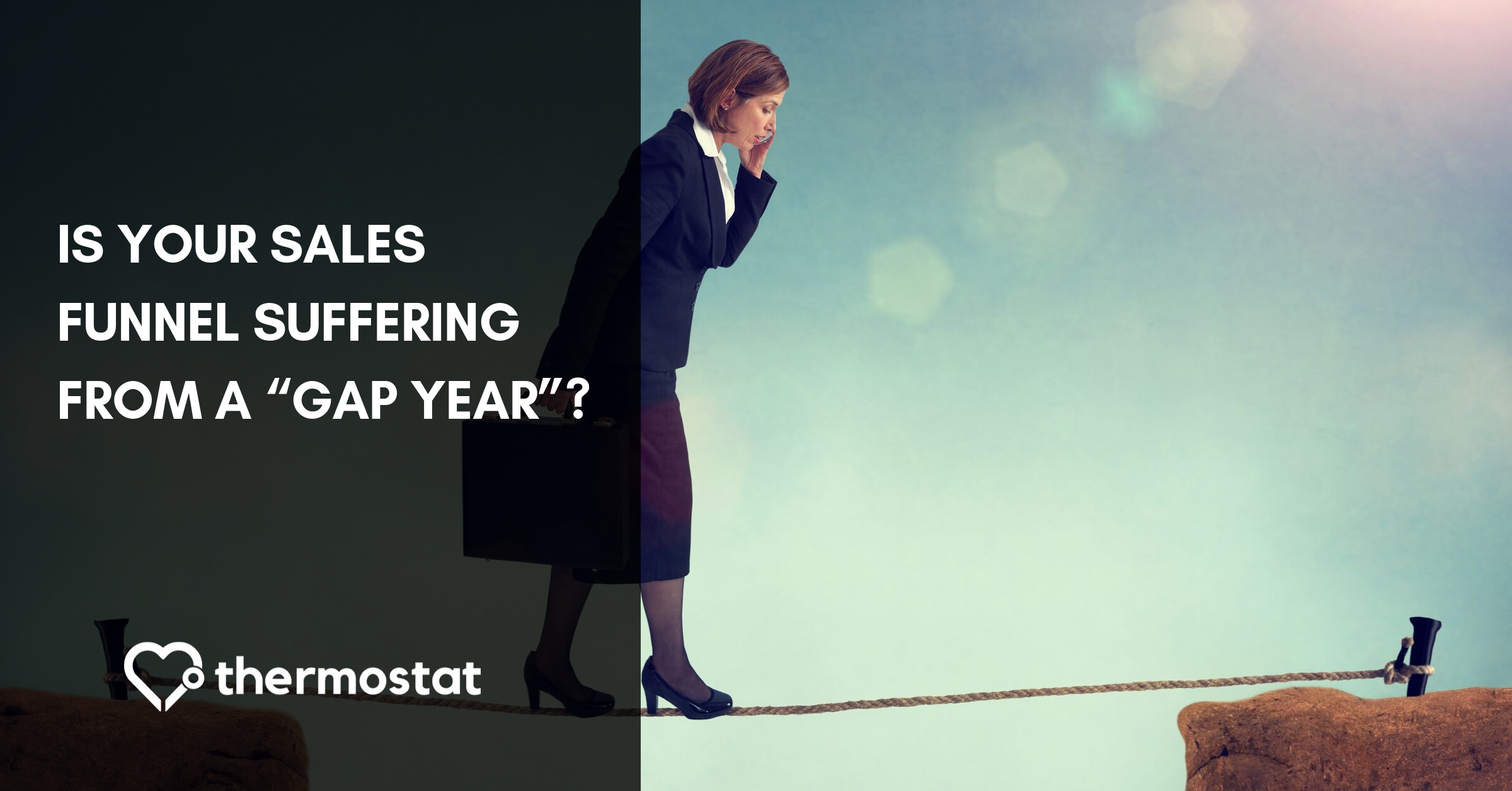Closing the Dreaded “Gap Year” in Your Sales Funnel with an NPS Survey

Ian Landsman
October 7, 2019

Ah, the sales funnel. It’s the driving force behind your sales strategy—the system that turns reluctant prospects into enthusiastic first-time buyers. Ultimately, it’s what makes your business effective. But if your sales funnel includes a “gap year,” it may not be as slick and successful as you had believed.
The reality is that your sales funnel does more than just generate leads and drive prospects to a sale. Your sales funnel should be designed to sustain relationships with customers. If you’re allowing months to pass between the point of purchase and the point of re-contact, you’re missing a valuable opportunity to convert one-time customers into long-term partners. Instead, you’re allowing a “gap year” to rob you of revenue, long-term customers, and ultimately, growth.
The solution to this sales-threatening period of radio silence is an NPS survey.
Blog readers get %5 off paid plans for life with code: blog
The Sales Funnel: A Basic Breakdown
First, let’s take a look at your basic sales funnel. While there’s going to be some variation in every business owner’s process, your goals remain the same: attract prospects, create interest, prompt a decision on a tempting offer, and finally make a sale.
For example, you might use digital advertising to reach potential customers, attract them to your page with intriguing copy and graphics, give them an opportunity to consider a purchase, and finally, make it simple for them to click “buy now.”

Alternatively, you may have a less direct approach. You focus first on creating brand awareness with valuable content. Before pushing a sale, you offer additional content in exchange for an email sign-up. You build a relationship via email marketing and social media. Then, you suggest a purchase.
The “sale” point of your funnel is, of course, the main point. To entice a purchase, you might offer a special discount, promo code, or free shipping for your final push. Immediately after a purchase, you follow up with a request for a review or testimonial, or a “Thank you!” email. In any case, your prospect has now become a customer—and hopefully, a happy one.
Here’s where the trouble starts: How do you continue making contact with your customer without necessarily suggesting another sale?
Many marketers simply let months pass without another touchpoint.
By the time you reach out to your customer again, she’s forgotten about your brand. Sure, she purchased your leather shoes, or organizational software, or shower gel subscription service. But in the meantime, she’s also purchased potentially hundreds of other items from other brands. Who are you again?
Allowing a “gap year” to pass could significantly increase customer churn. Your customers have researched, discovered, and maybe even purchased products or services similar to your own. They’ve been inundated with thousands of other messages and an avalanche of marketing content. They’ve moved on.
An NPS Survey: Your “Gap Year” Solution
Here’s how to keep your customers coming back for more: Give them an opportunity to speak up and give you feedback. The best way to achieve his goal is through an NPS (Net Promoter Score) survey, sent a few months after a purchase.
An NPS survey provides a natural, non-sales-related touchpoint that lets customers know you are thinking about them, you value their input, and you’re working on delivering a higher quality experience, product, or service.
Not only that, but it provides a subtle-but-significant reminder of your brand and messaging, setting off that critical “Oh yeah!” moment that will bring them back to your website, store, or web app.
Creating Your NPS Survey
By now, you know that an NPS survey is packed with big, juicy benefits for your business.
But what does it actually ask for?
NPS stands for Net Promoter Score. It basically seeks to gather information about how likely your customers are to recommend your product or service to others, filtering survey takers into three categories: Promoters, Passives, and Detractors.
An NPS survey might look like the following two-question survey:
-
_How likely are you to recommend us to a friend, colleague, or family member? Please give us a rating 0-10. _
-
_Please explain your answer: ___________________________________________.
The questions may be simple, but the insights produced will be invaluable. An NPS rating paired with additional feedback will give you actionable intel to improve your product or service, retain customers, and expand your word-of-mouth marketing.
Delivering Your NPS Survey
Your NPS survey can be delivered in a variety of ways, depending on the natural progression of your sales funnel.
For example, if you’ve already communicated frequently (and successfully) with customers via email, you can share your survey in an email targeted to customers 6 months or so after their last purchase.
Alternatively, if your product or service generates high website traffic, then consider using a pop-up on your site to give them an opportunity to provide feedback. You can also embed a survey directly into your app, creating a natural touchpoint during usage. Although these options may not be as successful at tackling the “gap-year” phenomenon, they are good to keep in mind.
If your customer base is connected to your social media accounts, you can link to an NPS survey. For example, you may want to post your link on Twitter to give your followers a chance to respond to your call for feedback (also providing a valuable customer touchpoint beyond a simple “Like” or “Retweet”).
Depending on your typical channels of communication, you can also include a link in an email newsletter, Slack, or another digital platform.
In any case, using warm and friendly copy to present your NPS survey will generate a higher rate of response and create that relationship-building momentum that will help you eliminate the gap year.
Hey! Got a minute?
We want to hear from you!
Can you answer a couple of questions for us?
Ultimately, your customers may be more likely than you think to answer multiple questions and provide thoughtful feedback that explains their responses.
Timing Your NPS Survey
Timing your NPS survey depends on your product cycle.
For example, if you sell a monthly subscription service, you may want to wait a bit longer before contacting your customer base. Give them an opportunity to receive a few packages before providing feedback. On the other hand, if you’re an ecommerce company, you may want to wait just a few weeks after the point of purchase before making contact again. You’re most likely looking to generate more frequent sales from your customer base, and won’t want to wait months before reaching out again.

Another option is to time your NPS survey so that it corresponds with a specific experience, such as a phone call with a customer rep. Sending targeted customers an immediate, relevant survey communicates your investment in their experience and creates another valuable touchpoint.
Check Yourself: 5 Key Touchpoints in Your Sales Funnel
Final Word: Customer Retention is Better Than Customer Acquisition
Acquiring new customers costs you far more than retaining existing customers. That’s one of the main reasons that the “gap year” can be so costly. Losing contact with people who have already agreed to buy from you could result in significant churn, and ultimately, it can send you scrambling for new customers over and over.
An NPS survey is a key touchpoint that’s a win-win for both you and your customers, and it helps reduce the risk of churn. Thermostat can help you integrate an NPS survey into your own sales funnel in a variety of ways, including a pop-up, email, or link. Plus, it helps you store, interpret, and clearly report results. To give it a try for free, click here.
Blog readers get %5 off paid plans for life with code: blog
Our best articles, right to your inbox
